A gable vent is a specific type of vent installed in the gable ends of a roof to facilitate natural ventilation in an attic space. Positioned at the peak of a gabled roof, this vent permits the escape of hot air and the entry of cooler outside air, which helps in regulating the temperature and moisture levels within the attic. The effectiveness of gable vents relies on the principle that hot air naturally rises, and when it exits through these vents, it creates a negative pressure that draws in cooler air from outside through lower vents, often located in the soffits.
The design of gable vents can vary, ranging from simple screened openings to more ornate louvers or slats that can complement the architectural aesthetics of the building. In addition to their functional role, these vents can offer a visual accent to a home’s exterior. It’s important for homeowners and builders to ensure that these vents are adequately sized and properly positioned for optimal performance. When balanced with the intake vents, gable vents can contribute significantly to a well-ventilated attic space, which can protect roof structures from moisture damage and improve the energy efficiency of the home.
Advantages of Gable Vents
While there are several types of roof vents, gable vents offer several benefits to homeowners, including improved energy efficiency, better moisture control, and enhanced attic ventilation. These advantages lead to a more comfortable and sustainable home environment.
Energy Efficiency
Gable vents play a crucial role in reducing energy consumption. They allow hot air to escape during summer, thereby decreasing the workload on air conditioning systems. This natural form of air exchange helps maintain a more consistent temperature within the attic and contributes to lower cooling costs.
- Reduced energy bills: By facilitating the escape of hot air, gable vents decrease the demand on HVAC systems.
- Natural air flow: These vents support a passive cooling system, harnessing wind to circulate air and regulate temperature.
Moisture Control
Controlling moisture is vital for preserving the integrity of a home’s structure, and gable vents contribute significantly to this function. They allow damp air to exit the attic space, which helps prevent the buildup of moisture that can lead to mold growth and wood rot.
- Mold prevention: By allowing moisture-laden air to escape, the risk of mold and mildew formation is reduced.
- Structural integrity: Keeping the attic dry helps prevent wood rot and other moisture-related damage to the home’s framework.
Attic Ventilation
Proper ventilation of the attic space is essential for the overall health of a home. Gable vents enable a continuous airflow, which not only helps with temperature regulation but also aids in preventing issues associated with stagnant air.
- Air quality improvement: A well-ventilated attic helps in maintaining better air quality throughout the home.
- Prolonged roof life: Effective attic ventilation can extend the life of roofing materials by reducing extreme temperature fluctuations.
Types and Styles
Gable vents come in a variety of types and styles, each with its unique characteristics that complement specific architectural designs. They are chosen based on both functionality and aesthetic appeal.
Size and Shape Variations
Gable vents are available in numerous sizes and shapes to suit different ventilation needs and gable sizes. Common shapes include:
- Rectangular: These are the most traditional and widely used, offering a straightforward design suitable for a vast range of homes.
- Round: Also known as circle vents, they can give a softer appearance and are often chosen for their decorative appeal.
- Triangle: These align with the triangular shape of many gables and are ideal for homes that want to maintain a consistent geometric aesthetic.
- Half-round: This semi-circular style provides a classic look that can be used alone or above other vent shapes for enhanced ventilation and visual interest.
Shapes are chosen not only for their ventilation capabilities but also for how well they blend with a home’s exterior.
Matching Architecture
The design of gable vents must complement the architectural style of the home. Here’s how different vent types align with various styles:
- Victorian, characterized by ornate detailing, might incorporate elaborate wooden gable vents with intricate patterns.
- Craftsman-style homes might feature simple, sturdy wooden vents, which reflect their handcrafted aesthetic.
- Modern homes often choose sleek, metal vents with clean lines.
- Colonial homes may use louvers in an effort to remain true to their historically symmetrical and classic design.
Selecting gable vents that match the home’s architecture enhances curb appeal and preserves the design integrity of the property.
Materials and Durability
The selection of materials for gable vents is crucial for their durability and overall longevity. These components combat the elements while allowing attic ventilation.
Common Materials
Gable vents are constructed from a variety of materials, each with distinct attributes and durability. The most typical materials include:
- Vinyl: Lightweight and low maintenance, vinyl resists rot and corrosion but may degrade under intense UV exposure.
- Wood: Offers natural aesthetics but requires regular maintenance to prevent decay and is susceptible to insect damage.
- Aluminum: Highly durable and rust-resistant, aluminum stands up to severe weather but can dent.
- Polyurethane: Mimics the look of wood and resists rot, with a longer lifespan than vinyl.
Weather Resistance
The efficacy of gable vents heavily depends on their ability to withstand adverse weather conditions. Material-specific characteristics include:
- Vinyl: Vulnerable to warping and cracking in extreme temperatures.
- Wood: Prone to moisture damage, necessitates treatment for enhanced resistance.
- Aluminum: Exceptionally weather-resistant, though may oxidize over time without proper coating.
- Polyurethane: Generally unaffected by moisture or temperature variations, maintains appearance and function.
Longevity
The lifespan of gable vents is contingent upon the material employed and exposure to weather. On average, their longevity can be outlined as follows:
- Vinyl: 10 to 25 years
- Wood: 15 to 30 years with proper maintenance and treatments
- Aluminum: Over 25 years with periodic maintenance
- Polyurethane: Up to 50 years with minimal maintenance
Materials used in the construction of gable vents play a significant role in determining their durability and longevity.
Installation Considerations
When installing a gable vent, important factors include choosing to hire professionals is key to ensuring optimal functionality.
Professional Installation
Professional installation ensures that the gable vent is installed with precision. Pinnacle Home Improvements is recognized for their skill in installing gable vents. With years of experience, we understand the nuances of proper vent placement and securing the integrity of the house’s structure.
Pinnacle Home Improvements has successfully completed numerous gable vent installations. We ensure correct placement and sizing, which are critical to maintaining proper attic ventilation and avoiding moisture-related issues.
Maintenance and Upkeep
To ensure that gable vents perform optimally, routine inspection and regular cleaning are essential measures. These practices prevent blockages and damage, extending the lifespan of the vents.
Routine Inspection
Frequency:
- Inspect the gable vents at least twice a year, typically in the spring and fall.
Checklist:
- Structural Integrity: Look for cracks, warping, or other signs of damage.
- Blockages: Ensure that the vents are free of nests, leaves, and debris.
- Insect Intrusion: Check for signs of bees, wasps, or hornets building nests within the vent area.
- Paint and Sealant: Examine if the paint is peeling or if the sealant is intact around the edges of the vents.
Action Steps:
- Address any issues promptly to maintain proper ventilation.
Cleaning Procedures
Tools Needed:
- A soft brush or cloth
- Mild soapy water or a specialized vent cleaner
- A vacuum with a hose attachment, if available
Steps:
- Remove Debris: Gently use the brush or vacuum to clear out any loose debris.
- Wash Surfaces: With a soft cloth, wipe down the vent’s interior and exterior with soapy water.
- Rinse Thoroughly: Ensure no soap residue is left behind, which could attract more dirt.
- Dry: Allow the vent to fully dry to prevent moisture buildup which can damage the vent and attract pests.
By consistently performing these maintenance tasks, gable vents will continue to function efficiently and effectively.
Common Questions
In this section, readers will find succinct answers to frequently asked questions about gable vents, providing them with a clear understanding of their purpose, function, and installation.
FAQs
What is a gable vent?
A gable vent is a slatted ventilator located at the peak of a gable end of an attic. These vents allow for the escape of hot air and the entrance of cooler air, contributing to a well-ventilated attic.
Why are gable vents important?
Gable vents play a crucial role in maintaining optimal attic ventilation. They help in reducing moisture accumulation and mitigating the risk of temperature extremes, which can affect a home’s energy efficiency and structural integrity.
How does one identify a gable vent?
Gable vents are typically triangular or rectangular in shape and are found on the exterior wall at the attic level, beneath the peak of the roof.
Are there different types of gable vents?
Yes, gable vents come in various designs and materials including wood, vinyl, aluminum, and urethane. They can also differ in terms of their features, such as being decorative or functional, and whether they include screens to keep out pests.
How are gable vents installed?
Gable vents are installed by cutting an opening in the gable end wall of an attic, positioning the vent, and securing it in place. Professional installation is recommended to ensure proper sizing and sealing.
Can gable vents be used with other types of ventilation systems?
Yes, gable vents can be part of a more comprehensive ventilation system, including soffit vents and ridge vents. For optimal performance, a balanced ventilation system is advised.
Reach Out to Pinnacle Home Improvements for Gable Vent Installation
While we’re well known in the area as top roof contractors, we do much more than install new roofs. If you’re looking to enhance your home’s ventilation, Pinnacle Home Improvements is your go-to resource for all things related to gable vents.
Reach out to Pinnacle Home Improvements today! The experts on our team have a wealth of knowledge and experience in assessing ventilation issues and can guide you through the best options for your home. Don’t let poor attic ventilation compromise your home’s integrity and your family’s comfort. Take the first step towards a healthier, more energy-efficient home.







